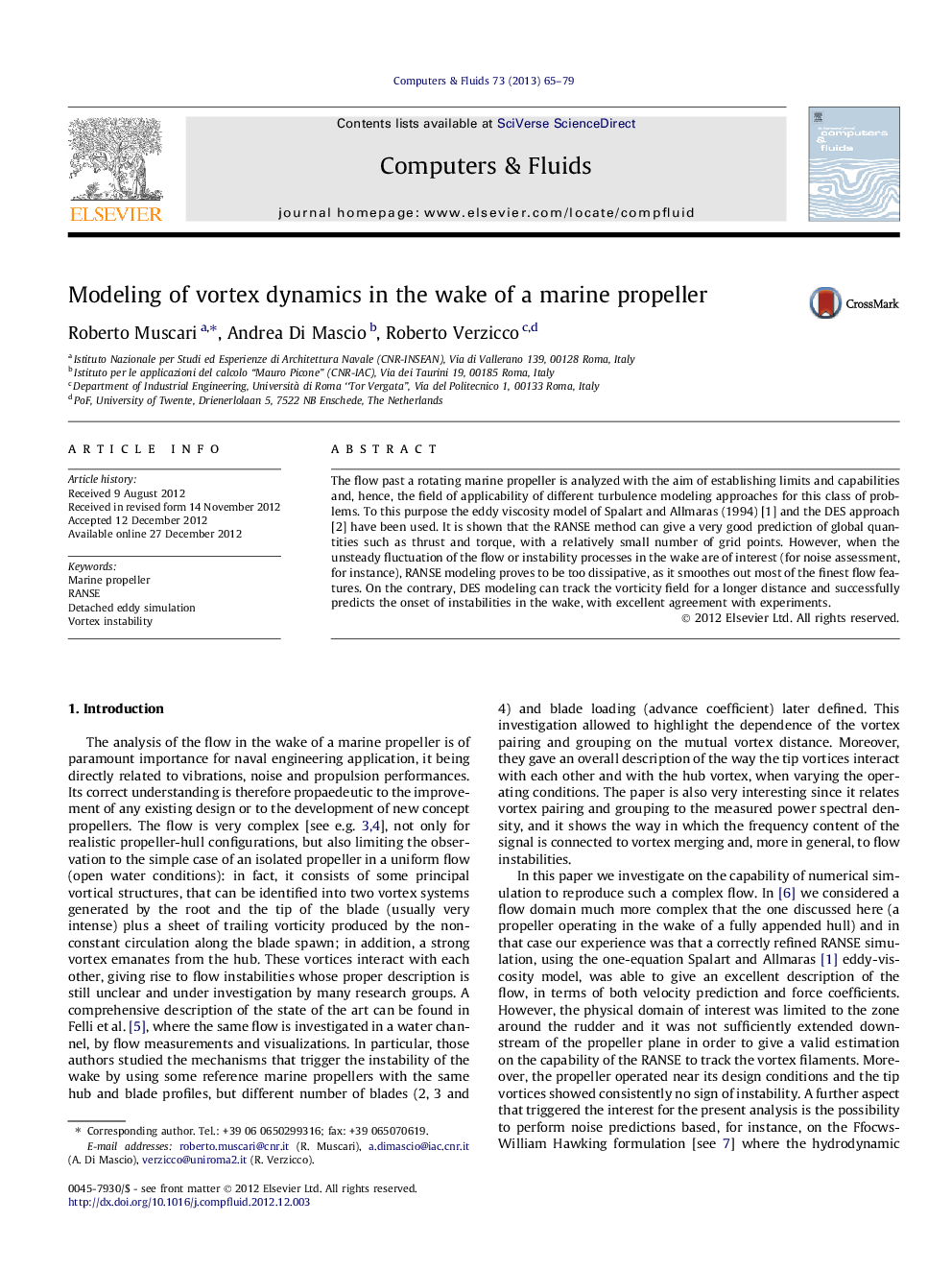| Article ID | Journal | Published Year | Pages | File Type |
|---|---|---|---|---|
| 762290 | Computers & Fluids | 2013 | 15 Pages |
The flow past a rotating marine propeller is analyzed with the aim of establishing limits and capabilities and, hence, the field of applicability of different turbulence modeling approaches for this class of problems. To this purpose the eddy viscosity model of Spalart and Allmaras (1994) [1] and the DES approach [2] have been used. It is shown that the RANSE method can give a very good prediction of global quantities such as thrust and torque, with a relatively small number of grid points. However, when the unsteady fluctuation of the flow or instability processes in the wake are of interest (for noise assessment, for instance), RANSE modeling proves to be too dissipative, as it smoothes out most of the finest flow features. On the contrary, DES modeling can track the vorticity field for a longer distance and successfully predicts the onset of instabilities in the wake, with excellent agreement with experiments.
► The flow around a marine propeller is modeled by both RANSE and DES. ► Force and moment prediction is in excellent agreement with experimental data with both models. ► Flow structure is well captured by DES, while is completely lost with RANSE modeling. ► DES is able to reproduce vortex instability and grouping for high blade loading. ► Power spectral density of turbulent kinetic energy is well predicted by DES.
